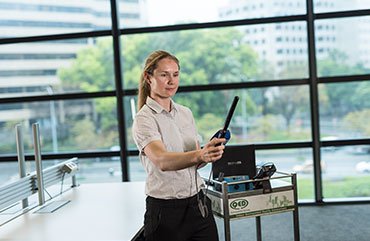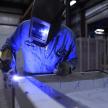Wet & Dry Floor Slip Testing
Facility owners and managers have a duty of care and compliance obligation with regard to the risk of pedestrians slipping, tripping, or falling on floor surfaces.
Accredited and independent slip resistance testing will determine if floor areas meet minimum anti-slip performance requirements and regular testing can help to manage risks arising from wear and surface treatments such as cleaning.
Pedestrian surfaces, whether open to the public or not, present a risk to be managed and this is applicable across all property sectors:
- retail
- office
- hotel
- education
- industrial
QED will tailor a slip resistance testing program to each facility depending on the surfaces involved and pedestrian traffic patterns. Our in-house laboratory can also assess flooring products prior to installation.
Why is Slip Testing Important?
Conducting slip resistance testing is important to help reduce exposure to:
- injuries due to slips, trips, or falls
- potential impact of litigation and liability claims
- increased insurance premiums
There are two major parts of slip resistance testing:
- initial assessment of flooring material in the laboratory enables suppliers to certify resistance of a product prior to installation or delivery to site
- ongoing monitoring of existing pedestrian surfaces by facility owners fulfills their duty of care and compliance obligations
Testing of pedestrian surfaces is the first step in developing and operating a risk management plan. If requested we provide interpretation of test results to assist with risk assessment and mitigation
How is a Slip Test Conducted?
QED conducts slip resistance tests in accordance with relevant Australian Standards and issues reports endorsed by NATA, the National Association of Testing Authorities.
We conduct both in-situ and laboratory slip resistance tests using accredited and calibrated equipment by the:
- wet pendulum test method, and/or
- dry floor friction test method
We provide suppliers of flooring products (manufacturers and importers) NATA-endorsed test certification of their pedestrian surface materials. This testing is conducted at our inhouse laboratory in accordance with AS 4586 Slip resistance classification of new pedestrian surface materials.
Ongoing monitoring of in-situ flooring is conducted according to AS 4663 Slip resistance measurement of existing pedestrian surfaces.
Looking for More Information?
Head over to our blog and download our free Whitepaper on how to manage your duty of care when it comes to slips, trips and falls.
Or contact us today to book your Slip Testing Consultation.

















